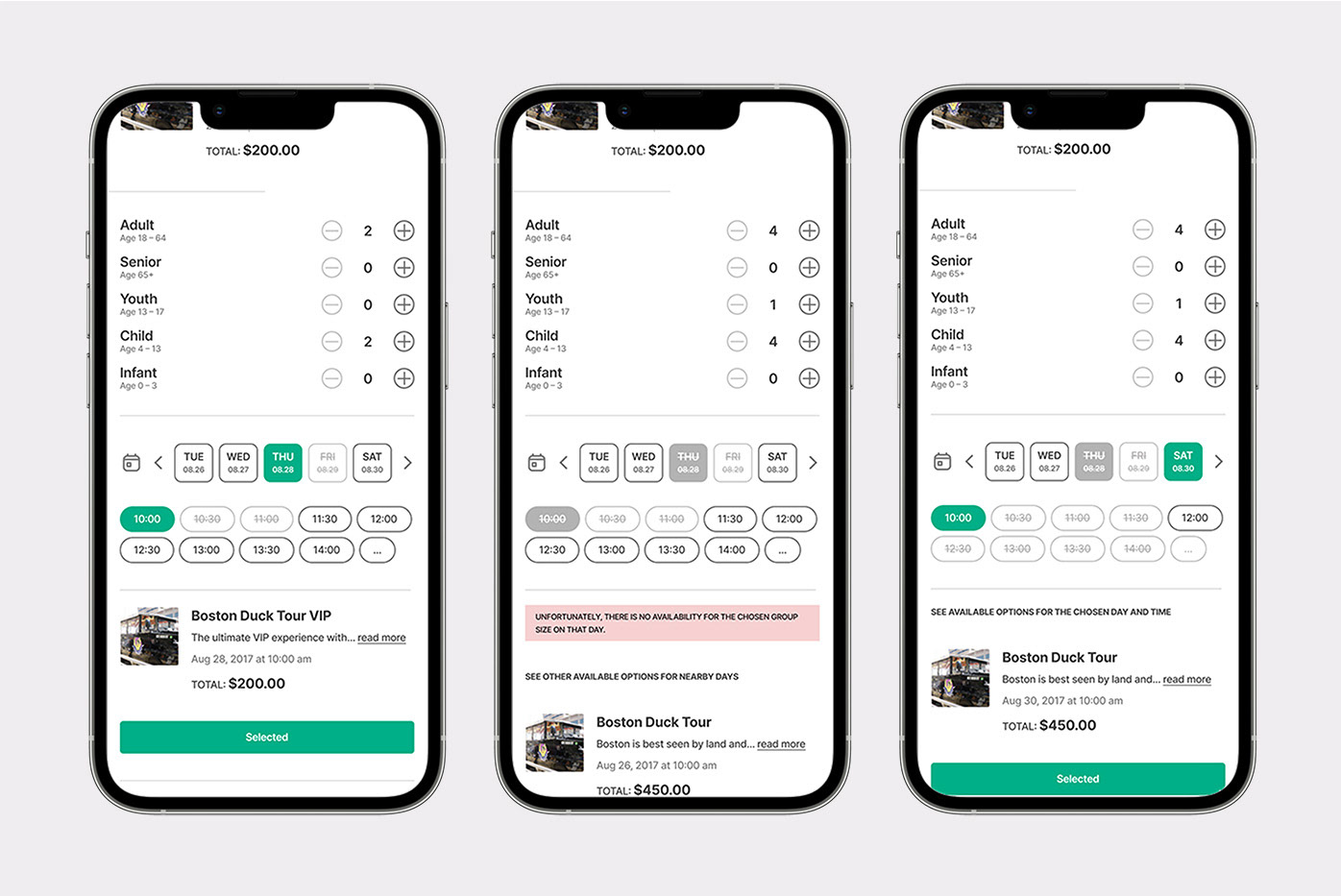existing flight self-editing
In-app flight editing feature for Lola.com, allowing users to modify their existing flight booking.
Client: Lola.com
Role: Product Design (lead)
Duration: June 2020 – Dec 2020
background
As the pandemic disrupted global travel, Lola.com, a platform designed for small to mid-size businesses, saw a surge in flight cancellations and rescheduling requests. To alleviate the pressure on their customer service team (Wombats), the company decided to develop a flight self-editing feature. This feature would allow users to modify their flight bookings without having to rely on support.
My role
As the lead product designer for the travel pillar at Lola, I was responsible for leading the entire design process. This involved collaborating with the product manager and engineers, conducting research, creating wireframes, and designing high-fidelity prototypes. Additionally, I tested and iterated the feature with a select group of customers and Wombats to ensure user-centric design. I ensured the feature was delivered within a tight timeline and met both design and technical specifications.
problem space
Before this feature, Lola users had to rely heavily on the Wombat team for flight edits. This caused delays and frustration, especially during the pandemic when the volume of changes increased. Users couldn't modify their bookings, and customer service had to manage all the requests manually.
Research
I conducted user research to understand the challenges faced by both Lola users and the Wombat team. The main focus was to identify the technical limitations of existing flight booking systems and the needs of the users.
Use cases
To streamline the flight editing process, I categorized use cases into two groups: eligible and ineligible for self-editing.
Self-service eligible:
Self-service eligible:
• Single traveler booking.
• No flown segments.
• All legs of flight selected for class change.
• Booked by the traveler or on behalf of someone else.
• More than 60 minutes before departure.
Self-service ineligible:
• Multiple travelers in a booking.
• Class changes for individual legs.
• Less than 60 minutes before departure.
Flow chart
I created flow charts to visualize the paths users would take to edit their flights. This clarified which edits users could do independently and which would require assistance from the Wombat team.
Design strategy
Given the urgency of the feature, we focused on delivering high-fidelity designs quickly. I worked closely with the engineering team to ensure technical feasibility and iterated on designs with real users to maintain a user-centric approach. We also identified key touchpoints (email notifications, trip receipts, PDF invoices) that would need to be updated to reflect the changes.
Wireframes
I designed wireframes for both the “happy path” and edge cases to ensure that all potential flight edit scenarios were covered. These scenarios included class changes, alerts for needing assistance, refunds, and the ability to handle flights with already flown segments.
User flow: Change outbound flight date
1. Select the trip from the Trips page.
2. Choose the leg of the flight to change.
3. Select a new date.
4. Search for available flights.
5. Select the new flight.
6. Checkout.
7. Confirm changes.
Prototype
The prototype was designed to support the main flow as well as multiple edge cases. This included:
• Cabin class changes (applies to the entire flight).
• Handling one leg of the flight that had already been flown.
• Offering various refund types (even exchange, airline credit, forfeited value).
• Scenarios where users had to connect with the Wombat team for multiple travelers or urgent changes within 60 minutes of departure.
Flow 1: Happy path
Flow 2: Cabin class change
Flow 3: One leg flown
Flow 4: Refund types
Flow 5: Multiple travelers
Flow 6: 60 minutes to departure
Flow 7: Change within void period
learnings
The expedited development due to the pandemic led to a highly successful feature launch that reduced Wombat team interactions by 20%. However, to meet tight deadlines, we had to move quickly into high-fidelity prototyping with less testing than usual. Post-launch iterations were critical in refining the feature.
The key takeaway was that trust and close collaboration between design, engineering, and product management were essential in achieving such a rapid turnaround. Additionally, our "snappy and scrappy" motto helped the team stay agile and effective throughout the process.
